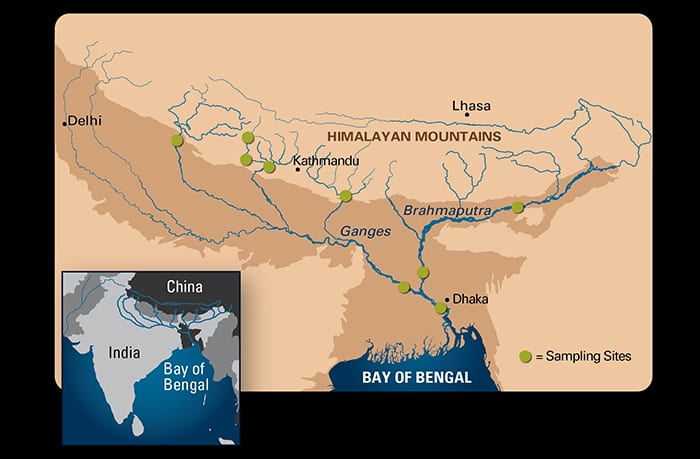During monsoons, the Ganges and Brahmaputra Rivers export 50 metric tons of carbon-containing sediments per day into the Bay of Bengal. WHOI scientists study rivers around the world to analyze how much carbon comes from plants versus rocks and how that has changed over time. The studies can unravel interrelationships among geologic, climate, and anthropogenic changes—from the emergence of the Himalayas and monsoons to the rise in greenhouse gases and dams. In one study, they found that global warming could destabilize a large pool of carbon stored in Ganges-Brahmaputra sediments and similar places on Earth, potentially releasing more carbon dioxide into the atmosphere.(Illustration by Amy Caracappa-Qubeck, Woods Hole Oceanographic Institution)
Image and Visual Licensing
WHOI copyright digital assets (stills and video) contained on this website can be licensed for non-commercial use upon request and approval. Please contact WHOI Digital Assets at images@whoi.edu or (508) 289-2647.
